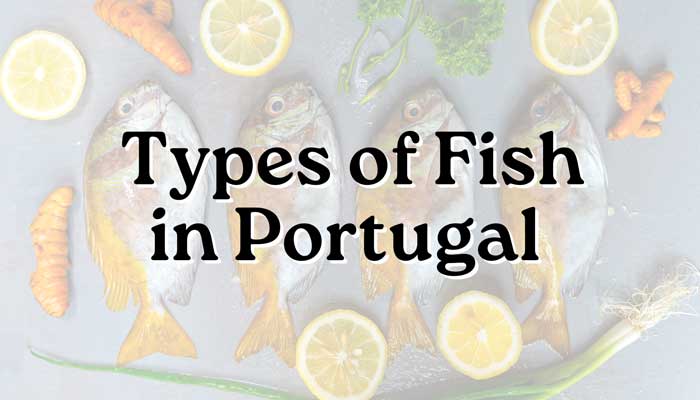It just so happens that humanity cannot live without food, which is why we devote so many topics to various dishes and drinks of Portugal. Today’s topic is inspired by the variety of fish on supermarket shelves. After reading this article and knowing some types of fish, you will also be able to navigate restaurant dishes.
Sardines (Sardinhas)
The name of this fish comes from the name of the island of Sardinia, which is located in the Mediterranean Sea. Once upon a time, a huge number of this fish were observed in the area of this island, hence the name.
Sardines are small in size, but have fatty and nutritious meat. However, not all months of the year are good for eating sardines. In Portugal, they are guided as follows: sardines are best eaten in the month whose name does not contain the letter “r”. Namely, from May to August inclusive. But the best month for sardines is June. It is during this month that various festivals are held, where fried sardines are the treat.
In the past, sardines were one of the cheapest and most accessible fish in Portugal, but popularity among tourists has sharply increased their value, making this fish the hallmark of the country. Walking through the streets of Lisbon in the summer somewhere in the Alfama district, you will definitely smell the smell of fried sardines.
Cod (Bacalhau)
Surely in supermarkets in Portugal you have seen strange bodies of fish, dried and white with salt, and in restaurants you have seen dishes that contained the word “bacalhau” in the name. This is all cod, and it is used to make many traditional Portuguese dishes that are an integral part of many family celebrations.
A fun fact is that cod is caught in the Norwegian Sea. Quite far from Portugal, isn’t it? Given the presence of the Atlantic Ocean, Portugal loves fish imported from Norway and Iceland. It was the drying and salting of cod that made it possible to deliver the fish to Portugal and significantly increase its shelf life. Before eating, the cod is soaked and then anything can be done with it: they simply add olive oil, fry, bake, and so on.
Tuna (Atum)
Tuna is not considered the most popular type of fish in Portugal, although it is caught in Portugal. On shelves with canned goods we can often see fillets or pieces of tuna in a tin. Canned tuna is sold in its own juice, olive or vegetable oil. It is added to fresh vegetable salad. It is also sold fresh and pickled, and is excellent for making sushi or frying.
Eating tuna in moderation is healthy, but in large quantities it can be dangerous, including for your wallet. 100 grams of tuna meat contains the daily requirement of vitamin D, calcium and magnesium. However, tuna is capable of accumulating heavy metals that are harmful to human health.
There are different types of tuna – white, bigeye, striped and blue. The last of them reaches 3 meters in length. The largest specimen was spotted in the city of Sesimbra in 2010.
Trout (Truta)
The fish that is caught not in the ocean, but in the freshwater reservoirs of Portugal, is trout. Trout season runs from early spring to mid-summer. And, if hunting for some types of fish is prohibited in some places, then hunting for trout is allowed throughout the country.
Besides the bright orange-red meat, the trout itself is beautiful on the outside. Of course, it cannot compare with the fish of the Red Sea or the Indian Ocean, but compared to other local fish, it is famous for its beauty.
There are colorful dots and specks all over the trout’s body. Moreover, trout meat is moderate in calories and rich in vitamins such as A, C and E. Excellent for those who are on a diet, it strengthens the cardiovascular system, prevents the formation of blood clots and has a positive effect on the endocrine system. Unlike tuna, trout not only does not accumulate toxins, but also dies itself if a toxic substance gets into the water.
Sea bream (Dourada)
We will begin the description of this fish with the fact that its meat is sweetish. An unusual taste characteristic for fish, isn’t it? Its meat is also aromatic and tender, and has a pink color. When cooking, this fish should not be subjected to long-term heat treatment. So, for example, you only need to fry trout for 1.5-2 minutes on each side.
Sea bream meat is rich in useful elements. It contains a lot of iodine and helps prevent thyroid diseases. And also, trout meat is a source of high quality protein, fatty acids, vitamin D, potassium and phosphorus, which improves heart function, strengthens blood vessels, bones and the nervous system. To maintain the level of omega-3 in the body, it is recommended to eat trout at least 1-2 times a week. You can even eat this fish at night, as its meat is easily and quickly digested.
In Portugal there are no dishes in which trout is used in a veiled manner. The menu usually says “Dourada”, so you can’t go wrong. Sea bream weighs only 1-2 kilograms and fits entirely on a plate.
Conclusion
In Portugal you must obtain a fishing license. Depending on the type of fishing (river or ocean, from the shore or at sea, etc.) the price per year varies between 50-70 euros. However, in order to enjoy delicious Portuguese fish, you do not need to overcome the difficulties of catching it. It’s enough to find a good restaurant, and sometimes just go outside and follow the smell!
